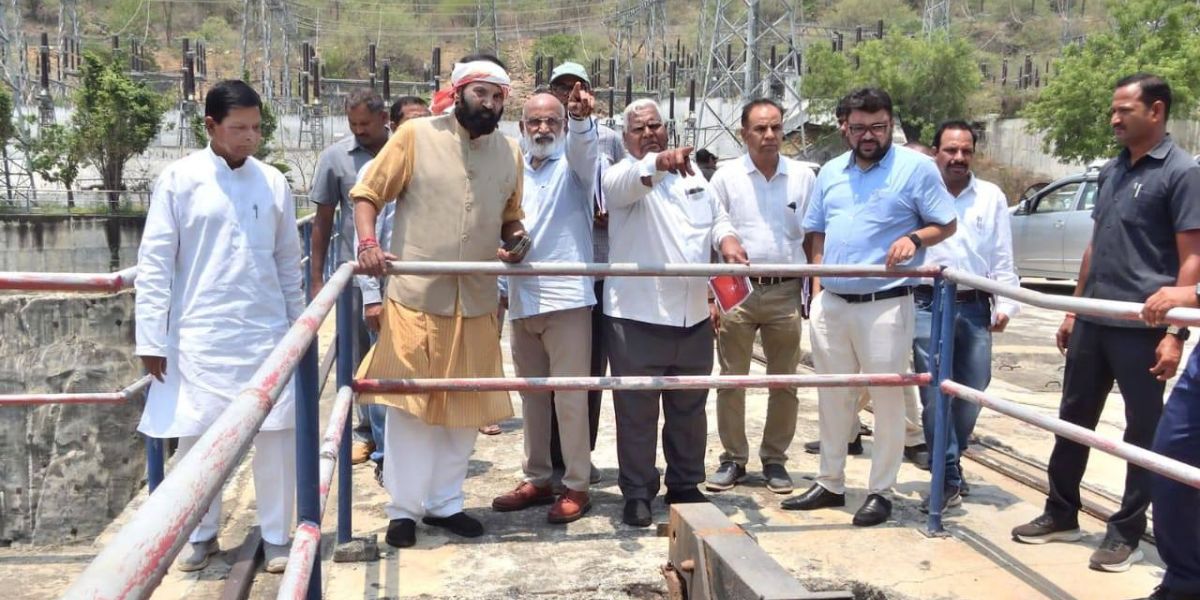The Congress government, in December last year, had aimed to complete the project by December 2026, but the revised timeline extends by a year.
Published May 02, 2025 | 8:50 AM ⚊ Updated May 02, 2025 | 8:50 AM

Minister N Uttam Kumar Reddy reviewing the progress. (Facebook)
Synopsis: The Telangana government has set a new completion deadline of December 2027 for the ambitious Palamuru-Rangareddy Lift Irrigation Scheme. The system is designed to lift 90 TMCft of Krishna River floodwater in 60 days during the monsoon season.
The Telangana government has set a new completion deadline of December 2027 for the ambitious Palamuru-Rangareddy Lift Irrigation Scheme (PRLIS), a multi-stage project aimed at irrigating 12.3 lakh acres of land across the six southern districts.
Irrigation Minister N Uttam Kumar Reddy, after inspecting key project sites on Thursday, 1 May, announced timelines for pending works and promised timely fund releases to ensure steady progress.
His visit covered major reservoirs and pumping stations at Narlapur, Yedula, Vattem, and Teegalapally.
At Narlapur, the minister reviewed the Stage-I pumping station and the reservoir, which holds 6.4 Thousand million cubic feet (TMCft) of water. He also examined the progress of the open canal between Narlapur and Yedula, a part of Package-3, setting a six-month deadline for its completion.
In Yedula (Wanaparthy district) and Teegalapally (Kodair mandal), he inspected the Stage-II pumping station, which houses 10 pumps of 145 megawatt (MW) capacity each, with a total discharge capacity of 23,000 cusecs of water.
The associated reservoir can store 6.5 TMCft of water. An important feature of this segment is India’s largest underground cavern, measuring 30 meters in width, 415 meters in length, and 90 meters in depth, located 160 meters below the surface.
At Vattem (Bijinepally mandal), Reddy visited the Stage-III pumping station, which mirrors the Yedula setup with 10 high-capacity pumps and similar discharge capabilities.
The minister announced that works required to fill 50 TMCft of water across the Narlapur, Yedula, Vattem, and Karivena reservoirs are being prioritised, with the Udandapur reservoir targeted for filling by March 2026.
The Congress government, in December last year, had aimed to complete the project by December 2026, but the revised timeline extends by a year. The government has committed to expediting construction despite fiscal constraints.
Uttam Kumaar Reddy had said in the past that ₹32,305 crore has been spent by the previous government, compared to the original administrative approval of ₹35,200 crore. An additional ₹33,201 crore is estimated to be needed, bringing the total cost to ₹65,506 crore.
PRLIS was conceptualised by the previous BRS government. Phase I was inaugurated on 16 September 2023 by the then-chief minister K Chandrashekar Rao, who commissioned the Bahubali pump sets at the Narlapur intake point near the Srisailam reservoir.
The project aims to lift water from the Srisailam reservoir foreshore near Yellur (Nagarkurnool district) to the KP Laxmidevipally reservoir (Rangareddy district) at an elevation of 670 meters, through a five-stage pumping system. Key infrastructure includes:
The system is designed to lift 90 TMCft of Krishna River floodwater in 60 days during the monsoon season (1.5 TMCft/day).
Phase I supports drinking water supply to 1,226 villages and stabilises existing irrigation; Phase II will expand irrigation coverage and enhance drinking and industrial water supply.
Despite some progress under the BRS regime — including securing environmental clearance in August 2023 and defeating legal challenges from Andhra Pradesh in the Krishna Water Disputes Tribunal (KWDT-II) — the project has faced funding delays under the current government.
With the Union government declining to declare it a national project, the state is sourcing funds independently. The Ministry of Jal Shakti has agreed to consider partial funding under the Accelerated Irrigation Benefit Programme (AIBP), contingent on the settlement of inter-state water disputes the and submission of a revised Detailed Project Report (DPR).
According to official sources, Anjanagiri reservoir and partially completed reservoirs such as Veeranjaneya and Venkatadri helped irrigate parts of Nagarkurnool and Mahabubnagar districts during the Rabi 2025 season, using stored floodwaters from Phase I operations.
(Edited by Muhammed Fazil.)
